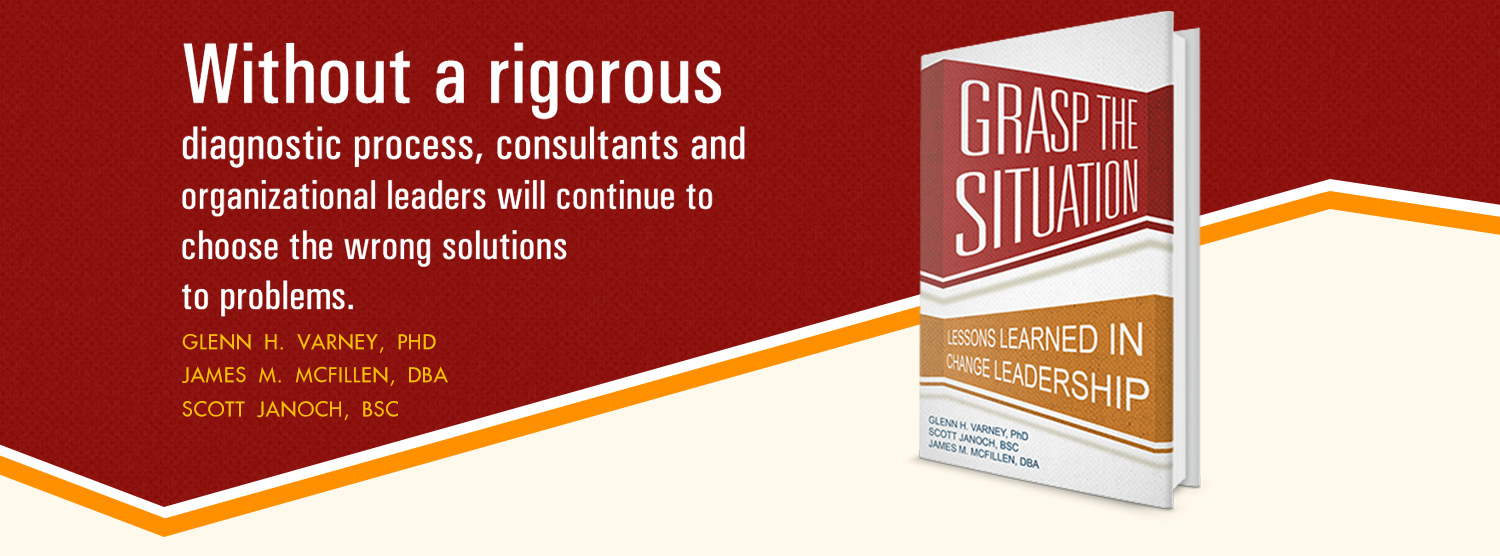

Leaders and managers of an organization often face the challenge of change. Unfortunately, managers often make costly mistakes when they start making changes in their organizations. In fact, the record shows that 70 percent of change projects in organizations fail.
We’ll look at one such failure as an instructive example to discuss why the attempted organizational change failed and how the organization could have gotten it right in the first place — because getting it right the first time is possible.
The manager of an assembly plant, William, and the human resource manager, Robert, visited a Japanese assembly plant and observed the value of teamwork in building cars. When they returned home, they made the decision to implement a team process to improve quality throughout their plant.
They started by pulling their supervisors off the line and putting them through four days of “Managing by Teams” training. The plan was to convert their “line” approach to a “team-based” approach. Halfway through the training of about 100 supervisors, the union president showed up in Robert’s office to announce that “the union membership would not be involved in any team nonsense.” The project was dead on the spot. This mistake cost the company almost $1 million.
The plant’s upper management got wind of what William and Robert had done and started asking questions about how they had gotten “cross-wise” with the union. Justification for the supervisory training, in their words, was to “introduce and inform our line supervisors about methods used by our competition. It was mostly for their information — we had no intent of copying their methods.” Their explanation was not well received by William’s boss, the vice president of operations.
Where both William and Robert went wrong was in failing to recognize how the union leadership would react to any kind of change that affected the union contract. The general rule when change is even remotely being considered is to always engage with those who will be affected the most.
William and Robert’s intentions were worthy, as they were focused on improving quality and reducing costs. However, not getting change right the first time means they will probably not get a second chance.
William and Robert made the costly mistake of not fully grasping the situation before deciding to make such a fundamental change in the organization’s assembly process. These two managers should have found the time to engage in effective diagnosis and fully understand the impact this change would have on the organization. When contemplating change, managers must avoid the trap of not fully understanding the current state of the organization and the factors that underlie it. The organization exists in its current form for a reason.
In addition to understanding the current situation, getting it right the first time involves clearly defining the gap between the current situation and the desired state of the organization. The Irish have a saying, “If you don’t know where you are going, any road will get you there.”
Diagnosis establishes the direction for intervening in the organization and identifies potential roadblocks and pathways for change. Diagnosis involves going slowly at first in order to go faster later by designing an intervention that will get it right the first time.
Change can be strategic or problem-based. Strategic change is proactive and involves defining a change in the future direction of the organization. Such a change might arise because of possible new market opportunities or anticipated competitive challenges. William and Robert were engaged in strategic change. They were trying to move their organization in a new direction to counter competition in their industry.
Problem-oriented change is reactive and occurs when something goes wrong in achieving the current direction of the organization, such as problems in the existing production process or excessive employee absenteeism. In both types of change, leaders and managers all too frequently leap into action without fully grasping the situation at hand.
To get it right the first time, managers should follow some basic diagnostic steps. They are, essentially, the same steps a physician uses to diagnose an illness before prescribing a treatment:
- Study the current conditions (i.e., the symptoms), and collect information to thoroughly understand the situation.
- Identify the factors that support the current conditions. Those factors are both causes of the current situation and potential roadblocks to any change. A successful intervention must address the relevant factors in order to effect change.
- Compose a list of potential actions and carefully consider whether and how each action would affect the relevant underlying factors to change the situation and aid the transition.
- Select or design an intervention that incorporates the relevant actions and conduct a test of the intervention to determine whether it delivers the intended results. If not successful, repeat the diagnostic process. If successful, develop a plan for rolling out the intervention in the organization.
- Implement the intervention and continue to study its effectiveness in achieving the desired change.
If William and Robert had followed the diagnostic steps, they would have done their homework on what the Japanese company was doing — before visiting the plant. Also, they should have completed a “fit analysis” to see if any of the Japanese ideas would work in their operation.
Furthermore it would have been wise to discuss what they were thinking about with the union leadership and invite them to participate in the process. Assuming they came back with some good ideas, they could then have formed a joint task force to study the ideas further in order to see what might work in their plant. This process would have generated a more positive feeling with the union and their members, resulting in a joint cooperative effort to improve the plant operation.
The following are guidelines to help in making organizational change in a way that will help avoid the 70-percent failure rate:
- Remember to always think ahead before taking action.
- Analyze and plan in order to determine the impact change will have on the organization. A negative impact might mean a “no go.”
- Slow down and fully grasp the situation before moving ahead. Stay alert to impending shifts in the organization to avoid mistakes.
- Anticipate and avoid potential problems in the path to change.
- Lastly, and probably most importantly, always engage all people who will be affected by the change.
Learning how to conduct a thorough diagnosis in order to fully grasp the situation will pay off not only at work, but also in life.
This post is also featured here:
Recent Posts
Recent Comments
- on The Robert Story: Listing SymptomsGlenn Varney
The Real Person!
Author Glenn Varney acts as a real person and verified as not a bot.
Passed all tests against spam bots. Anti-Spam by CleanTalk.
Archives
- August 2020
- October 2019
- September 2019
- August 2019
- July 2019
- May 2019
- December 2018
- November 2018
- September 2018
- August 2018
- June 2018
- December 2017
- November 2017
- September 2017
- August 2017
- July 2017
- June 2017
- May 2017
- April 2017
- March 2017
- February 2017
- January 2017
- December 2016
- October 2016
- September 2016
- August 2016
- July 2016
- June 2016
- August 2015
